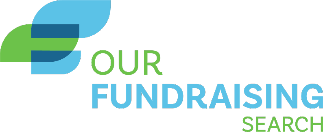It is my turn to write the OFS Fundraising Trends article for this new year. I am also starting off 2025 in my 45th year of fundraising. That is so hard for me to believe. Unlike Dave’s most excellent fundraising salary survey conducted each summer, our trends articles tend to be more opinion based on experience, not raw data. I have spent the last few snowy days cleaning out my files and my office and ran across some past trends information that I thought you might find interesting and which, along with our combined experience, informs the 2025 trend list for this year. Enjoy.
HISTORICAL TRENDS
Forty-five years ago, fundraising was primarily a white man’s domain. As I’ve written about before, when I moved into development at my college, I became the first woman in development at the university. They were not even sure a woman could do the job. Thankfully, in the time that has passed, the field offers a much broader opportunity for donors and fundraisers. The field is now 80% female and 8% minority.
1990’s
I have always kept up with fundraising trends and best practices. In the late 1980’s I was ready to predict some of my own. I worked with a large fundraising consulting firm that did mostly higher education work. Every year we surveyed the colleges and universities in the southeast and shared the results of our mini survey at the CASE (Council for Advancement & Support of Education) annual conference. In 1990 we reported our findings which revealed that the largest gifts ever made to southern colleges and universities generally came from a friend of the institution other than a trustee or alumnus and fell in the range of $1 million to $5 million. The majority of the gifts were designated for endowment and were not necessarily part of a campaign. That is quite different from giving to higher education in recent years.
Trends in 1993 included the first reference to the great intergenerational transfer of wealth with baby boomers inheriting trillions of dollars from their parents in 1998-2002 (still has not concluded). Multi-million-dollar campaigns were projected (and rightly so) to become multi-billion-dollar campaigns. We also saw the rise of public/private partnerships and the beginning of troubles for healthcare giving. Unrestricted corporate giving began their great decline in the 90’s. Development offices’ day-to-day operations were becoming “high-tech” with signature machines, automated dialing, and computerized-voice solicitations. Automated record-keeping and database prospect research were immediately embraced and were lifesavers in small development shops.
By 1996 the “largest gift ever” responses ranged from $400,000 to $125 million in higher educational institutions in the southeast. Thirty-eight percent of the largest gifts were from “planned giving.” Alumni major gifts rose from 13% in 1989 to 33% in 1996. Trustees’ influence becomes even more critical. Trustees accounted for 40% of the largest individual gifts and 100% of the mega-corporate gifts were due to a trustee connection. More than half of institutions responding were in “campaign mode.”
In the 1998 survey the “largest gift ever” responses were now up to $300 million. Mega-gifts reflect a pattern of giving. They do not represent the donor’s first or only gift. Seventy-eight percent of mega-gifts were solicited. Eighty-one percent of colleges and universities reported that the amount received was the amount requested.
The average campaign goal in 1999 was $130 million. The average higher education campaign length in the south was 58 months. The average of the top ten gifts to campaigns was 24% of the goal. Overall campaigns were getting longer and relying on fewer donors.
The “Fundraisers Guide to the Internet” by Michael W. Johnston was published in 1999 by NSFRE (which would later become AFP, the Association of Fundraising Professionals). Robbin Zeff, author of The Nonprofit Guide to the Internet published in 1996, said, “Cyberfundraising is the fundraising technique for the next millennium.”
The number of internet users was doubling every year. Every nonprofit was seeking to have a website, the purpose of which was communication with downloadable materials. For example, at the time, the Red Cross’ average online donation was $80 where their direct mail average gift was $36.
Organizations began to offer opportunities to make larger gifts online. Online pledging, automatic monthly deductions, credit card options, online merchandise sales and online surveys came into being.
The average online user family’s income was $66,700 in 1999. The average online user was 35.7 years old; Forty-seven percent had an advanced degree. The fastest growing user group was women with children. Eighty-eight percent of internet users were white.
Nonprofit organizations began to collect more information on donors. UNICEF had an excellent example of immediate response to confirm donations. Password protected areas of websites became accessible to members only. Online distance learning opportunities and online conferences could be offered at a fraction of the cost of an in-person event. Nonprofits could build relationships and apply online for foundation and government grants.
2000’s
By 2011 websites had to become mobile-friendly. QR codes linked to mobile-friendly sites. Institutions had to invest in hardware and software and weigh the costs with expected increased results. Consultants urged organizations not to lose their personal touch in their major donor relationships.
Advancement trends in 2011 also included salaries of development officers going up with length of stay in the job going down. Alumni and development officers became more closely aligned. Non-development staff (Deans) become more engaged in understanding how to raise money.
In 2012 most charities were still not raising much money via social media. Nine out of ten nonprofits were using Facebook and almost as many were using Twitter accounts and their own blogs. Giving in social networks was, however, the fastest growing in any area of giving.
“Collaboration” became the nonprofit buzzword between corporations and nonprofits and between nonprofits. Companies linked their bottom lines to giving and companies gave more to charities supported by their employees while also becoming involved where their employees volunteered.
By 2020 development turnover had escalated. Nonprofits appeared to be more political. Volunteering was up, but giving was not necessarily keeping pace. A cross-cultural perspective was in high demand in the corporate world as well as in nonprofits.
FUNDRAISING TRENDS TODAY
That brings us to 2025. So, of course, I typed in “fundraising trends for 2025” into ChatGPT to see what would happen. Not bad but needs to be tweaked.
Our world has become more digital, virtual, and automated. At the same time, the post-pandemic economy can feel unstable. Our current political climate is unpredictable at best. Case-in-point: At the time of this publication, nonprofits receiving federal aid are in a state of limbo between the President’s EO to temporarily freeze all funding and a federal judge’s block of that freeze.
Nonprofits will need to focus on their mission and goals while keeping to fundraising basics. But expect to see hybrid events, peer-to-peer fundraising and streaming fundraisers.
Technology
AI and data-driven fundraising will prevail to deliver personalized donor journeys, predictive analytics, and automated donor stewardship.
Monthly giving programs will continue to thrive and grow. Organizations should explore subscription-based donation models where donors commit to giving small amounts regularly for specific programs and causes.
Blockchain technology will be leveraged to track donations and ensure transparency, making it easier for donors to see how their funds are being used.
Transparency & Value-Alignment
Donors will demand greater transparency from nonprofit organizations regarding how their donations are used. Nonprofits that provide clear, tangible results and track impact will stand out and thrive.
Donors, especially younger generations, will gravitate toward nonprofits that more closely align with their values. Charities may provide financial transparency but may fall behind in their commitment to environmental concerns, DEI, and social responsibilities given the current political climate.
Expanded Forms of Giving
Cryptocurrencies will become more mainstream as a form of donation. Nonprofit organizations will need to incorporate these payment methods and understand the tax implications.
Mobile giving will continue to rise for donor engagement from donation tracking, event registration, updates on impact, and spontaneous giving during events and emergencies.
Donor Advised Funds & Tax Laws
Ten percent of giving in 2022, $52 billion, came from Donor Advised Funds. The National Philanthropic Trust reported that assets in Donors Advised Funds reached $250 billion in 2023. Nonprofits will need to build relationships with Donor Advised Fund sponsors and educate potential donors about the advantages of using these funds.
Nonprofits will need to stay abreast of tax law changes and how they might be impacted by this new administration.
The “New New Normal”
COVID is over. Nonprofits should have found their new normal. Some charities are finding new creative solutions-sharing office space and/or staff, new revenue streams and going virtual. Nonprofits need engaged volunteers and board members now more than ever. Build board training into annual retreats every year.
The desire from job candidates for more flexible working environments is increasing; however, this will need to be reconciled by nonprofit leadership that desires for staff to return to the office full-time, just like major corporations and the federal government. While nonprofits have to consider what is best for successfully addressing their missions, those with open positions, particularly fundraising roles, have the most success when publicly posting salary ranges and offering flexible work schedules. A national job seeker survey conducted by Work for Good in late 2023 found that 84% of the participants said they are not interested in applying to jobs with no salary information listed.
There is a strong need for organizations to pay even more attention to management of their fundraising resources, especially staffing. Turnover is increasing. Gen Z does not trust institutions. While they are interested in nonprofits, they will not hang around if they feel undervalued or mismanaged.
CONCLUSION
This is a lot of information. Please do not be discouraged. During my tenure I have lived through fundraising during and after Y2K, 9/11, the financial crises in 2008/2009, multiple election cycles, and of course, COVID.
We are still here. Our world still needs nonprofits. Engage your supporters like never before. Be prepared to react fast. Expand your board. Communicate with your donors. Look for opportunities to collaborate. Lay the groundwork for recovery, growth and whatever comes ahead of us. Keep monitoring fundraising trends and how circumstances have and will affect your own institutions.
It is a new year and all of us at Our Fundraising Search hope and pray it is a productive and successful one for you and your favorite charities.






Leave A Comment